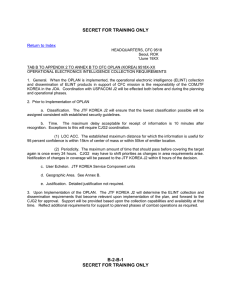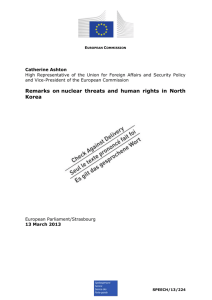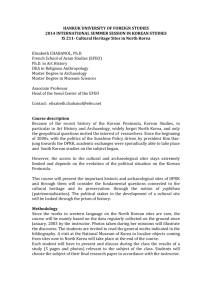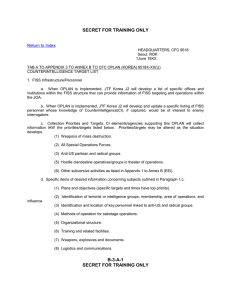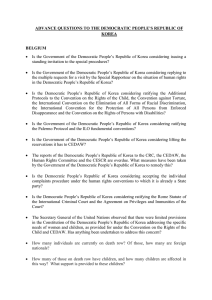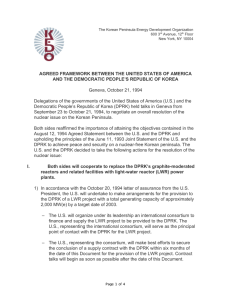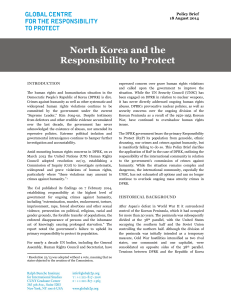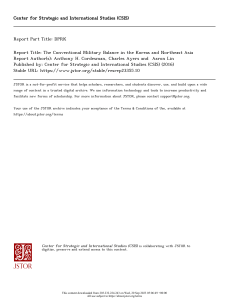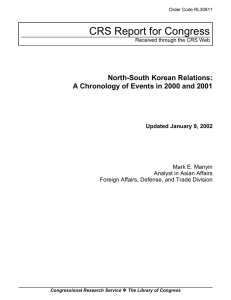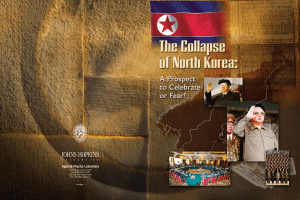SECRET FOR TRAINING ONLY Return to Index
advertisement
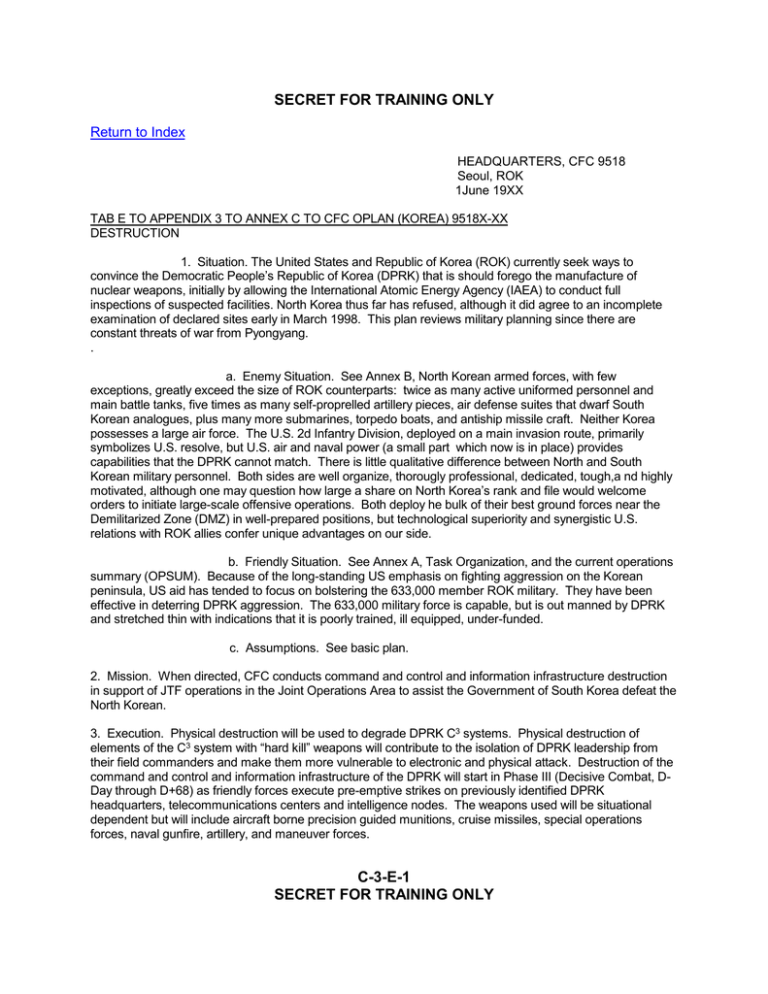
SECRET FOR TRAINING ONLY Return to Index HEADQUARTERS, CFC 9518 Seoul, ROK 1June 19XX TAB E TO APPENDIX 3 TO ANNEX C TO CFC OPLAN (KOREA) 9518X-XX DESTRUCTION 1. Situation. The United States and Republic of Korea (ROK) currently seek ways to convince the Democratic People’s Republic of Korea (DPRK) that is should forego the manufacture of nuclear weapons, initially by allowing the International Atomic Energy Agency (IAEA) to conduct full inspections of suspected facilities. North Korea thus far has refused, although it did agree to an incomplete examination of declared sites early in March 1998. This plan reviews military planning since there are constant threats of war from Pyongyang. . a. Enemy Situation. See Annex B, North Korean armed forces, with few exceptions, greatly exceed the size of ROK counterparts: twice as many active uniformed personnel and main battle tanks, five times as many self-proprelled artillery pieces, air defense suites that dwarf South Korean analogues, plus many more submarines, torpedo boats, and antiship missile craft. Neither Korea possesses a large air force. The U.S. 2d Infantry Division, deployed on a main invasion route, primarily symbolizes U.S. resolve, but U.S. air and naval power (a small part which now is in place) provides capabilities that the DPRK cannot match. There is little qualitative difference between North and South Korean military personnel. Both sides are well organize, thorougly professional, dedicated, tough,a nd highly motivated, although one may question how large a share on North Korea’s rank and file would welcome orders to initiate large-scale offensive operations. Both deploy he bulk of their best ground forces near the Demilitarized Zone (DMZ) in well-prepared positions, but technological superiority and synergistic U.S. relations with ROK allies confer unique advantages on our side. b. Friendly Situation. See Annex A, Task Organization, and the current operations summary (OPSUM). Because of the long-standing US emphasis on fighting aggression on the Korean peninsula, US aid has tended to focus on bolstering the 633,000 member ROK military. They have been effective in deterring DPRK aggression. The 633,000 military force is capable, but is out manned by DPRK and stretched thin with indications that it is poorly trained, ill equipped, under-funded. c. Assumptions. See basic plan. 2. Mission. When directed, CFC conducts command and control and information infrastructure destruction in support of JTF operations in the Joint Operations Area to assist the Government of South Korea defeat the North Korean. 3. Execution. Physical destruction will be used to degrade DPRK C3 systems. Physical destruction of elements of the C3 system with “hard kill” weapons will contribute to the isolation of DPRK leadership from their field commanders and make them more vulnerable to electronic and physical attack. Destruction of the command and control and information infrastructure of the DPRK will start in Phase III (Decisive Combat, DDay through D+68) as friendly forces execute pre-emptive strikes on previously identified DPRK headquarters, telecommunications centers and intelligence nodes. The weapons used will be situational dependent but will include aircraft borne precision guided munitions, cruise missiles, special operations forces, naval gunfire, artillery, and maneuver forces. C-3-E-1 SECRET FOR TRAINING ONLY SECRET FOR TRAINING ONLY a. Tasks for Subordinate Commands. Total destruction of the DPRK C3 system may not be attainable, desirable, or supportable. The goal will be the deliberate degradation of its capabilities to enable JTF Korea and other tactical commands to defeat DPRK military field forces. (1) CJG2. In coordination with the command’s and JTF Korea Information Operations (IO) planners develop a target list to nominate locations for destruction. (2) CJG3. Organize and staff the command IO cell and coordinate with JTF Korea for destruction targets. (3) JTF Korea (a) Coordinate with CJG2, CJG3 and CFC IO Cell for candidates for physical destruction. (b) Identify critical points for destruction and nominate them to CJG3. (c) Be prepared to accept augmentation from higher headquarters to staff the JTF IO cell. (d) When directed, attack selected C3 targets. (e) Provide feedback to higher headquarters on the results of destruction mission, both those executed by JTF Korea and those from other CFC components. (f) Identify those targets not sufficiently destroyed to require another strike to prevent their recovery. b. Coordinating Instructions (1) All combatants provide analysis of the DPRK’s ability to reconstitute the attacked C3 node. (2) Monitor the targets after the strike and re-strike if necessary. (3) Coordinate with the CFC IO Cell to identify, target, attack and evaluate results of destruction. 4. Administration and Logistics. See Annex D, Logistics. 5. Command and Control a. Command. See Annex J, Command Relationships. b. Signal. See Annex K, Command, Control and Communications Systems. C-3-E-2 SECRET FOR TRAINING ONLY
